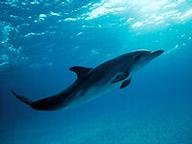Quiz Answer Key and Fun Facts
1. Inside the head of a dolphin is an organ known as a melon which is used for which of the following?
2. Which of the following statements about dolphins flippers IS true?
3. Which of the following is one of the most unusual features of the Amazon river dolphin?
4. In the 1960s the U.S. Navy trained dolphins to do which of the following things?
5. What is the best description of dolphins' eating habits?
6. Which of the following statements about dolphins and sleep is true?
7. Dolphins are known to make many squeaks and whistles using which part of their body?
8. In 2005, the Indo-Pacific bottlenose dolphin was discovered to use sea sponges in which of the following ways?
9. Orcas are a type of dolphin that are known to regularly hunt and kill humans.
10. At the turn of the 21st century, the Yangtze River dolphin became so numerous that they caused major problems with river navigation.
Source: Author
dcpddc478
This quiz was reviewed by FunTrivia editor
Tizzabelle before going online.
Any errors found in FunTrivia content are routinely corrected through our feedback system.

